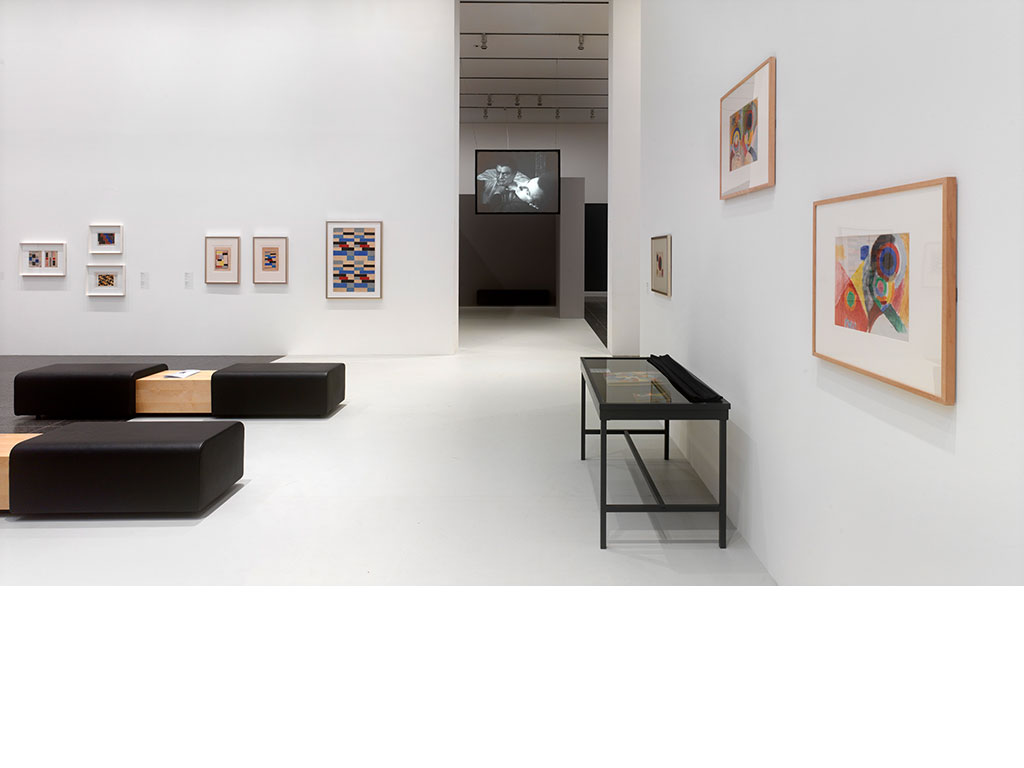The exhibition “The Other Side of the Moon” focuses on eight female artists who contributed substantially to the creative upheavals occurring in Europe during the 1920s and 1930s. Alongside Hannah Höch, Sophie Taeuber-Arp, Sonia Delaunay, Claude Cahun, and Dora Maar, we encounter Florence Henri, Katarzyna Kobro, and Germaine Dulac, artists whose works and biographies are less familiar, and who many visitors will discover for the first time through this exhibition.
The spectrum of artistic achievement encompasses a multiplicity of aesthetic tendencies ranging from Dada to Constructivism and Surrealism, and a range of artistic media, including painting, photography, collage, film, and sculpture. The explicit focus of “The Other Side of the Moon” is on the contributions of the woman pioneers of the avant-garde. This exhibition was designed to showcase representative female artists who participated early on in the artistic movements of their times and contributed substantially to establishing innovative stylistic directions.
One exemplary pioneer was Sophie Taeuber-Arp (1888–1943), a cosmopolitan personality who helped to launch the Concrete Art tendency in Europe, and was an early networker in avant-garde milieux. Other members of this circle of influential women artists were Hannah Höch (1889–1978), whose collages made her a founder of Berlin Dada, and Sonia Delaunay (1885–1979), who paved the way toward pure painting in Paris. Florence Henri (1893–1982) was a prominent exponent of Bauhaus photography. Dora Maar (1907–1997) and Claude Cahun (1894–1954) were the most radical women representatives of early Surrealism.
Most of the artists presented in the show were joined by close friendships at least for brief intervals, while the remainders were acquainted indirectly through their artistic activities. This ambitious exhibition charts the career paths, affiliations, shifting friendships, and temporary alliances – including the European-wide networks – cultivated by these extraordinary women.

